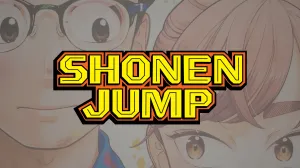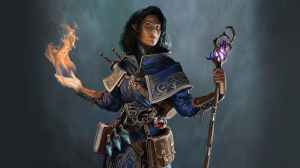The JRPG genre has seen a remarkable resurgence over the last decade, driven by both innovation and nostalgia. While Final Fantasy remains the largest name in the genre, the landscape around it has changed dramatically. Modern JRPGs are no longer defined by turn-based systems or anime aesthetics alone, but now include bold experiments, hybrid combat systems, and narrative structures that push the genre forward. Players are craving new worlds, new characters, and new forms of storytelling that honor the classics while carving new paths.
Videos by ComicBook.com
Yet with so many new titles appearing, there’s a growing sense that Final Fantasy may no longer stand unchallenged. The series has largely shifted from its turn-based history, with both Final Fantasy XVI and Final Fantasy VII Rebirth opting for more action-oriented gameplay. Several upcoming JRPGs, some from major studios, others from passionate indie teams, have captured enormous attention thanks to their strong visual direction, unique mechanics, and deep worldbuilding. These five games aren’t merely alternatives to Final Fantasy but titles that may redefine the JRPG genre for years to come.
5) DecaPolice

Level-5’s return to the spotlight has been long overdue, and DecaPolice may be the game that reestablishes the studio as a JRPG powerhouse. Blending detective gameplay, turn-based battles, and cyber-noir worldbuilding, DecaPolice brings a refreshing identity to a genre that often leans heavily on fantasy settings. The game follows a young investigator navigating the DECASIM, a virtual city simulation used for training police cadets. But as mysteries unfold and virtual crimes bleed into reality, the story promises to take sharp, gripping turns.
Where DecaPolice stands out is in its hybrid gameplay. Players gather clues using open-world exploration, interrogate suspects through interactive dialogue sequences, and battle threats using a turn-based combat system inspired by classic JRPGs. This fusion of detective mechanics and RPG structure feels reminiscent of Persona and Final Fantasy, but with enough new ideas to give it a unique personality.
Visually, DecaPolice embraces a striking anime-inspired aesthetic with bold color contrasts and expressive character animations. Level-5’s signature charm is everywhere: quirky characters, stylish UI design, and a sense of adventure that appeals to both younger players and longtime RPG fans. If Level-5 delivers on its promise of narrative depth and polish, DecaPolice could mark the triumphant return of one of Japan’s most beloved RPG studios and potentially sit alongside the big names in the genre.
4) Lost Hellden
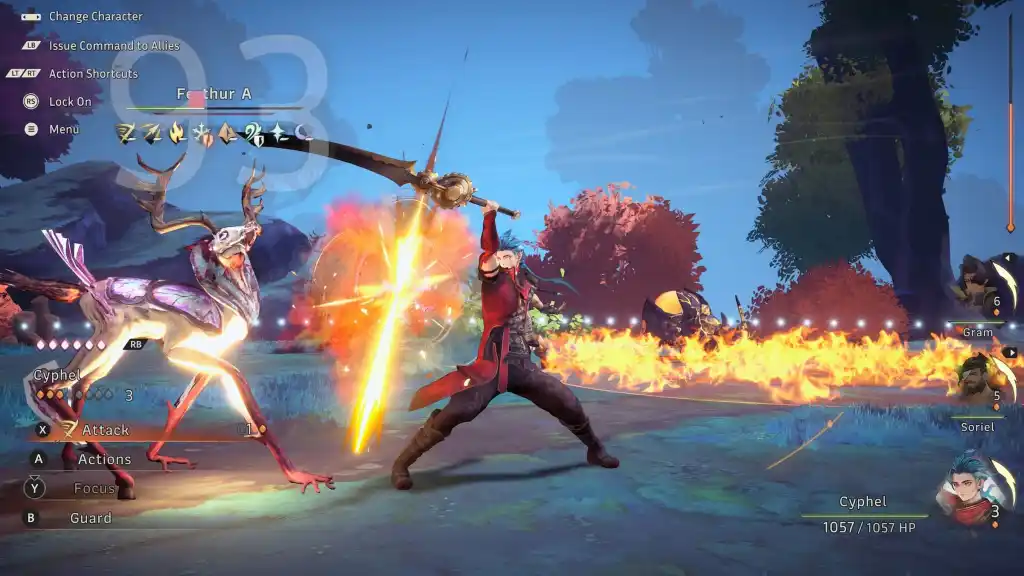
From Artisan Studios, best known for Astria Ascending, comes Lost Hellden, a visually spectacular JRPG animated by the legendary talent that helped shape Final Fantasy IX and Bravely Default. Its hand-painted environments, expressive character designs, and vibrant color palette instantly set it apart from nearly everything else in development. It looks like a modern HD-2D evolution, yet with a unique visual identity that makes every frame feel like a living illustration.
The game’s world revolves around the twins, two protagonists bound together by destiny but affected differently by the world’s sins. The story promises a blend of classic JRPG melodrama and darker thematic undertones, exploring identity, sacrifice, and the bonds between characters. That narrative ambition already has many fans excited and expecting a breakout hit.
Combat in Lost Hellden uses a real-time action system mixed with tactical elements. Skills, combos, and elemental affinities play a major role, making it feel closer to modern action-JRPGs like Tales of Arise than to traditional turn-based titles. Still, its pacing appears slower and more strategic than Final Fantasy XVI, creating a satisfying balance between action and planning. With a strong artistic team, a polished narrative vision, and striking visual direction, Lost Hellden could easily become one of the most memorable JRPGs of its generation.
3) Forge of the Fae
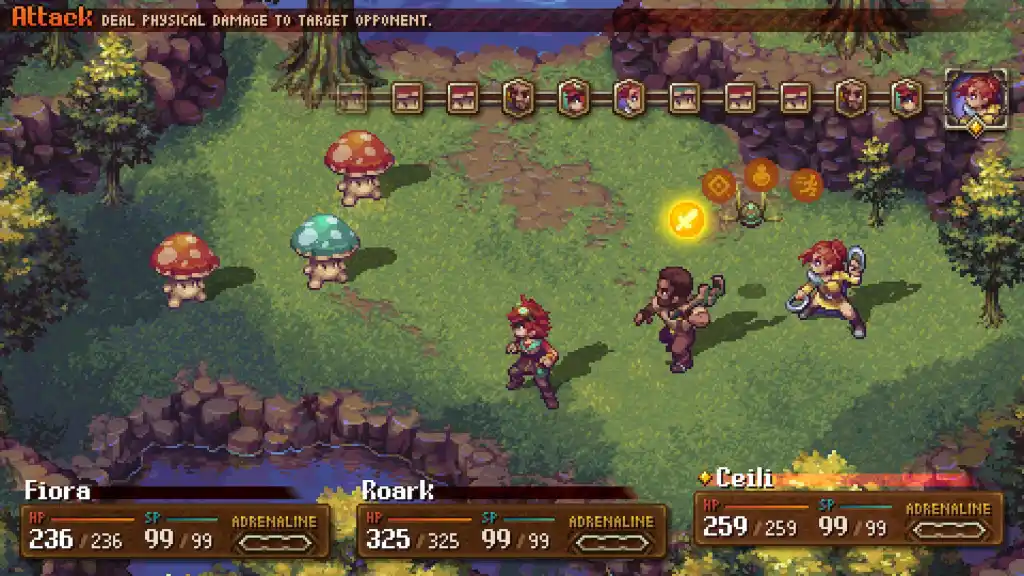
Forge of the Fae is shaping up to be one of the most promising pixel-art JRPGs on the horizon, blending Celtic-inspired fantasy with modern mechanics and a deep, choice-driven narrative. It feels like a combination of Chrono Trigger and Sea of Stars. The world of Forge of the Fae draws heavily from ancient Celtic folklore, painting its landscapes with mystery, enchantment, and the eerie beauty of the fae. It follows Fiora, a brilliant young inventor determined to uncover the truth behind a wave of mysterious disappearances.
What begins as a simple investigation spirals into something far larger: a miners’ strike erupting into violence, mercenaries hired to silence unrest, and an ancient magical world quietly stirring beneath the chaos. Fiora’s quest quickly becomes a journey through myth, danger, and political turmoil as she confronts forces far beyond her expectations. Every region is filled with secrets waiting to be unearthed, and every character Fiora meets contributes to a story that twists and deepens with each decision.
Where Forge of the Fae truly stands out is its modern take on turn-based combat. Inspired by classic JRPGs but designed for today’s players, the battle system is fast, dynamic, and layered with depth. At the heart of the game’s battle design is the philosophy that every system connects. Skills, spells, and passive abilities weave together into a cohesive whole, encouraging players to test combinations and craft their own style of play. The result is a combat system that feels immediately accessible yet richly rewarding the deeper you dive.
2) SacriFire

SacriFire is a lavish, story-driven RPG that draws inspiration from the 90s classics while boldly embracing modern innovation. Fans of Final Fantasy and Breath of Fire will recognize these games’ influence in a game designed not just to imitate the golden age of JRPGs, but to carry its legacy forward. Combining a deeply moral narrative, a hybrid combat system, and a rich world that blends fantasy and sci-fi elements, SacriFire aims to rekindle what made the genre magical while surprising players at every turn.
At the heart of SacriFire is its dynamic battle system, which merges real-time and turn-based mechanics into one fluid, satisfying whole. Players fight alongside a full party of companions, switching between weapons, disciplines, and abilities on the fly. Instead of simply choosing commands from a menu, you’ll link together flowing attack strings, weave in tactical pauses, and exploit openings to create elaborate combos. It’s fast, responsive, and richly layered, offering the strategic satisfaction of turn-based combat with the immediacy of action RPGs.
Where the game truly stands apart, though, is its visual identity. SacriFire blends hand-drawn pixel art with 3D-modeled environments, creating a look that is both nostalgic and technologically striking as players explore two beautifully contrasted worlds. And of course, no great JRPG is complete without a memorable soundtrack. SacriFire features original music from G4F as well as the legendary Motoi Sakuraba, whose work on Star Ocean, Tales of, Golden Sun, Dark Souls, and Valkyrie Profile has defined entire generations of RPG soundscapes. Paired with professional voice acting from Sound Cadence Studios, the world of Antioch and Erebus pulses with life, emotion, and grandeur.
1) Threads of Time
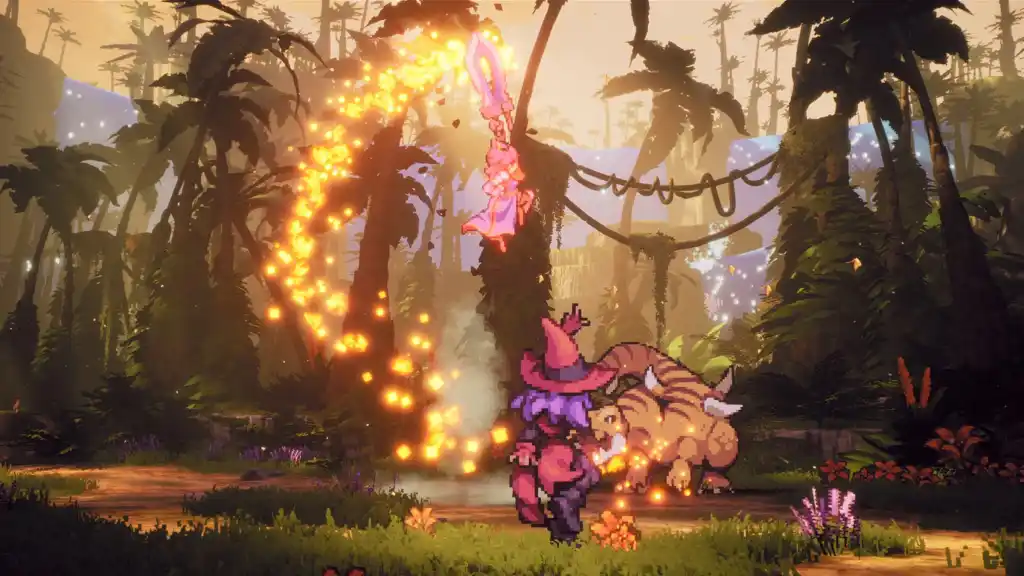
If there is one upcoming JRPG clearly aiming to evoke the spirit of Chrono Trigger while forging its own identity, it’s Threads of Time, a sweeping, time-hopping adventure built on classic turn-based combat and modern presentation. This is a game defined by scale, ambition, and heart. Rather than focusing on a single world or era, Threads of Time spans the entire tapestry of existence, sending players across epochs while unraveling a conspiracy that threatens all of history itself, much like Square’s classic SNES JRPG.
At its core is the game’s time-traveling narrative, which serves not only as a backdrop but as the very mechanism driving character development, worldbuilding, and progression. Players journey from prehistoric landscapes ruled by towering dinosaurs to the neon glow of a technologically advanced future, with magical kingdoms, dystopian wastelands, and alternate realms woven seamlessly in between. Each era feels distinct, filled with secrets, cultures, and consequences that echo through the ages, allowing players to uncover the threads connecting them with the narrative.
Combat is equally central to the experience. Threads of Time features timeless turn-based battles elevated by modern pacing, dynamic visuals, and clever time-manipulation mechanics. And a JRPG spanning multiple eras wouldn’t be complete without a cast drawn from the far reaches of history, and Threads of Time delivers with a roster of charismatic heroes from across ages. As you restore the legendary Order of the Time Knights, your party becomes a living mosaic of warriors, mystics, inventors, and wanderers—each bringing unique abilities, personalities, and perspectives shaped by their origins.
As the gaming industry has evolved, turn-based JRPG games are few and far between. Real-time and action-based combat has become the norm, even within the father of the genre, Final Fantasy. But indie developers have made it a personal mission to carry on this legacy, which is why this list is so heavily composed of them. Clair Obscur: Expedition 33 proved the appeal of this genre, leading the charge alongside Atlus’ Persona and Metaphor: Refantazio. If these indie games succeed, they could stand beside Final Fantasy and help usher in a new golden age of JRPGs, both turn-based and not.
What do you think? Leave a comment below and join the conversation now in the ComicBook Forum!





